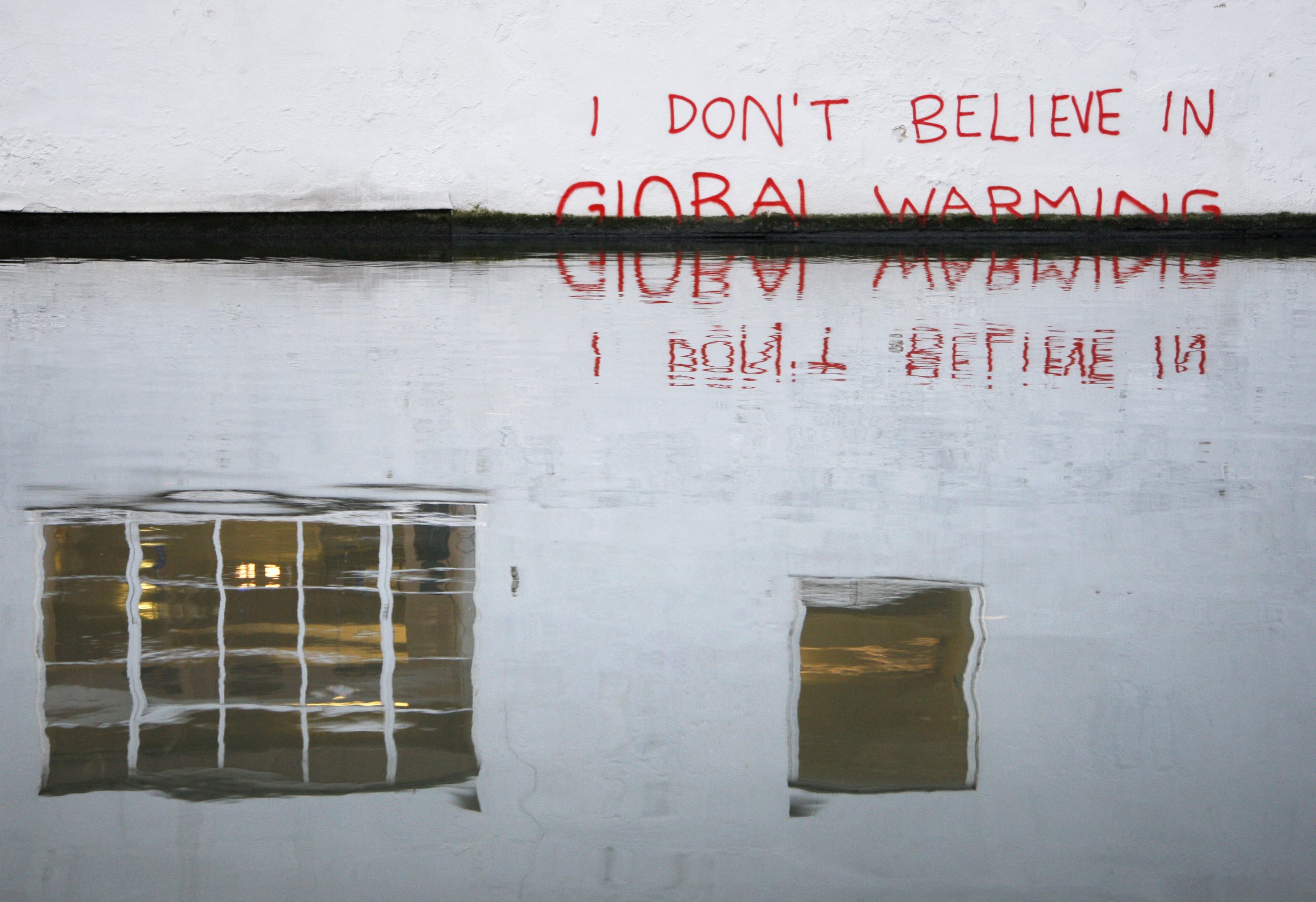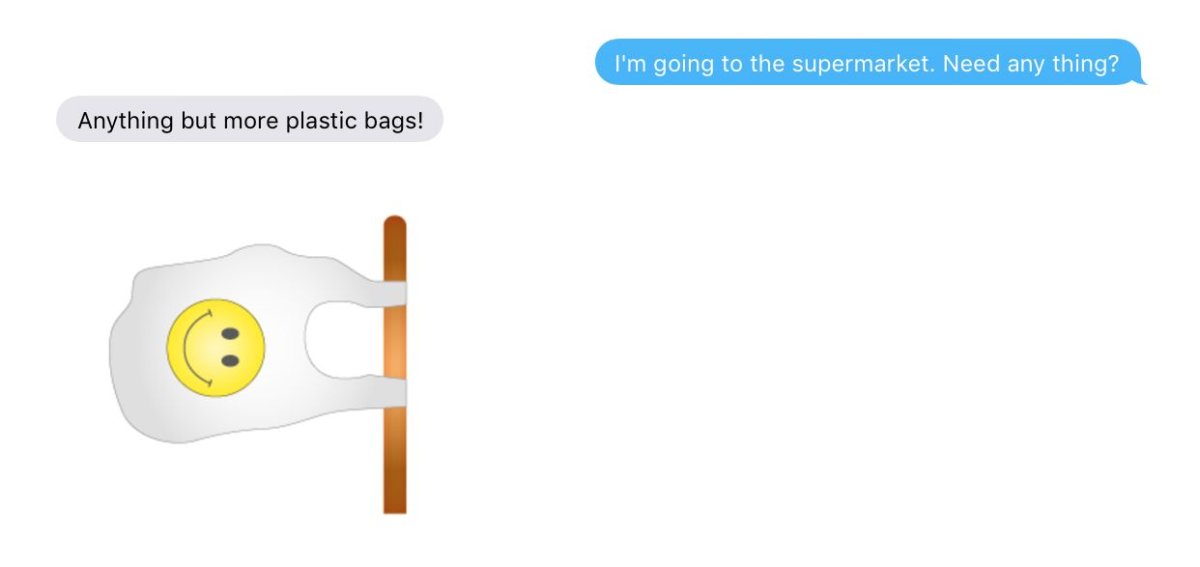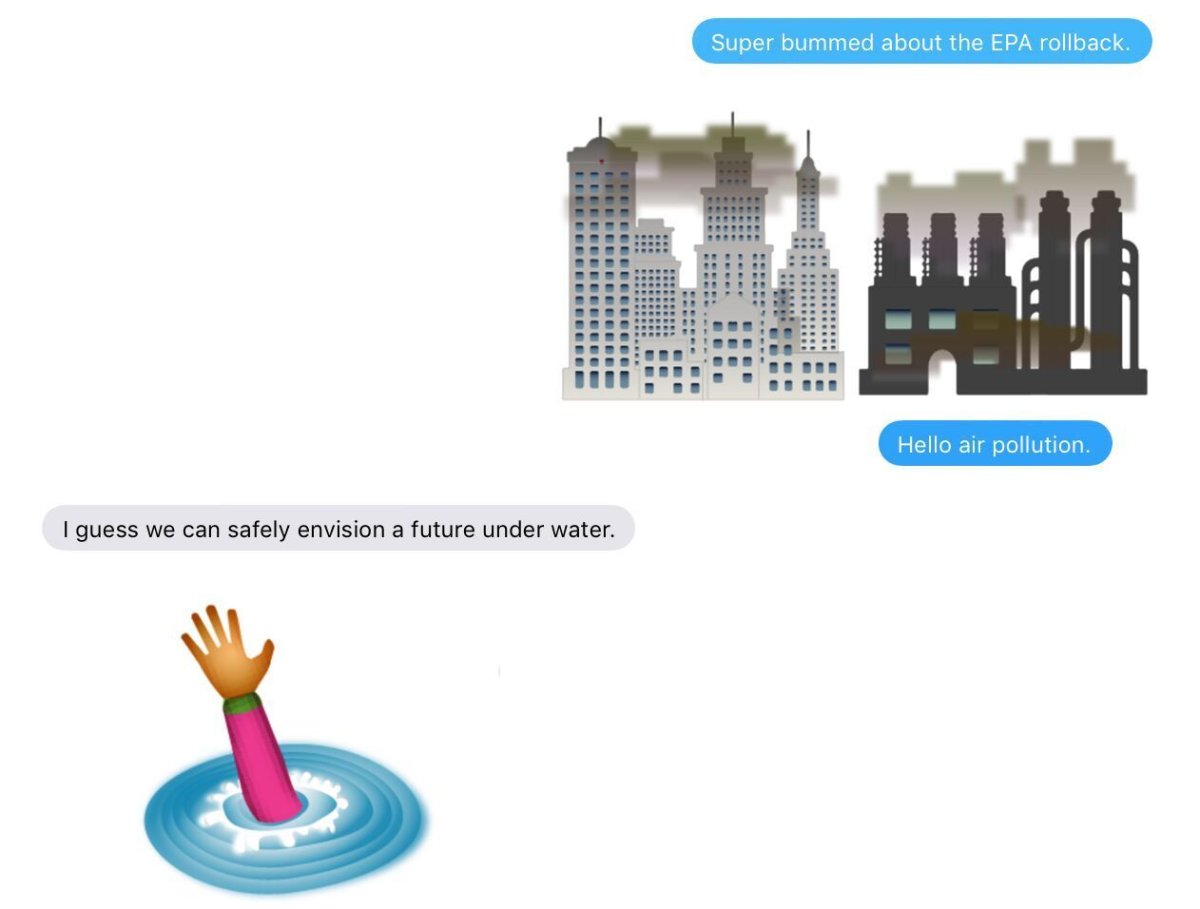
There's a new way to convey all of your lingering fears about the fate of the planet and humanity. A team of artists created a set of climate change emoji—dubbed Climoji.
The climate change emoji depict dying animals, methane-emitting cows, food waste, plastic-filled fish, forest fires and even people drowning. It is a grim picture, but a picture that is largely described in scientific literature of what the future holds if humans don't make concerted efforts to curb greenhouse gas emissions (among other efforts) to halt or at least slow climate change.
Marina Zurkow, media artist and professor at New York University's Interactive Telecommunication Program, said the focus on the negative aspects of climate change was intentional, even down to skin tone, as Earther pointed out. A solutions-based set may be developed in the future, but after the app launched late last year, Zurkow and her team are keeping their focus on starting a conversation about climate change.
#CCAwardee Marina @zurkow has joined forces with other artists to bring us Climoji, emoji that express despair, hope, and solidarity regarding #climatechange https://t.co/9Qwmum5khG pic.twitter.com/M52bSbOyfl
— Creative Capital (@creativecap) November 27, 2017
The set of icons was a team effort between Zurkow and Viniyata Pany, a recent graduate of the NYU program where Zurkow teaches. Richard Lapham, a mixed-media artist completing a master's degree at the program, also worked on the team. Manuja Waldia, a designer and illustrator, illustrated the icons, and Denny George, a creative technologist, developed the Android app. (Climoji is also available for Apple users).
Newsweek spoke with Zurkow to understand the inspiration behind the fusion of tech, art and climate change in the set of emoji-style icons.
What do you want people to take from the climate change emoji?
I've been making art about climate change and sort of what I would call "near-impossible nature-culture collisions" since 2006. I've looked for increasingly diverse ways to address problems that are either abstract or repulsive for people to think about and often are hot button issues. I've historically tried to use some amount of humor or at least levity or lightness as a kind of invitation to consider the topic at hand.

It seems the Climoji set really focuses on intense and negative concepts of climate change. Why not portray any solutions?
From biodiversity loss to glacial melt to flooding to landfill and waste production to pollution, et cetera. Plastics—ocean plastics, a really huge one. All of the stuff in our set is negative. They're not solutions. They're not mitigation suggestions. They're literally statements of what we would consider facts. People have been like 'Oh, everyone's going to be so bummed out—you're giving us such a grim picture.' Sometimes you have to learn to live with really discomforting truths to move past that in ways that have real deep meaning for yourself as an individual and as a citizen.
We plan to do another set of mitigation, adaptation and resiliency responses. But we felt like we didn't want to introduce a ticket out of a larger discussion, which is why these things are happening and how we are complicit in that.

How do you even approach tackling climate change conversations with texting-based, tiny images?
Our first goal was to call things what they are and try to produce a coherent set. One icon is good and can speak on its own, and hopefully the set as a whole can say something larger. Climate change is a systematic set of problems from abstract economic frameworks to entire industries to consumerism. How do you reduce that to an icon set that is comprehensible as a set that addresses some of the issues—certainly not all of the issues—that constitute climate change problems? The really challenging thing was brainstorming ways in which to describe abstract problems. Because an emoji needs to be one thing. You can't even put a set of characters in there. It literally needs to be a single compressed statement. That was art. That's what art does. Art sidesteps all the problems of long sentences by trying to collapse all of these things into one moment. It was very fun and very challenging.
Using tech to try to spark these climate conversations seems to fall in line with this very internet-focused world we're in.
Which is also a part of the problem.

Could you explain that a little bit more?
Tech can't assume that it's outside the set of problems that are producing anthropogenic change for the worse. From electricity consumption to the buy-it-now-ness of the internet, the need for instantaneity is at every turn—whether it be in instant communication or in purchasing something. There are real world repercussions to this that sometimes when you're online, you don't feel. You do not feel what is happening behind your decision to buy something. A lot of tech is kind of driven in a vacuum. Our program [at NYU] is trying to interrogate that and make it work differently, but that is the baseline assumption of technology. And, it's intensely inequitable. That's another fallacious myth that fits very well into other denials of inequity that exist.
Why was the focus on something that would start conversations rather than imply concrete change?
The hardest thing about change is the first step, which is consciousness to make change. And then the question is how do you make real change? I think that if you think in a systemic way, the kinds of solutions that we need—need to occur on a philosophical level first and foremost. And then on a economic, governmental, regulatory level. Those will only feel like deprivation otherwise.
This interview has been edited for length and clarity.
Uncommon Knowledge
Newsweek is committed to challenging conventional wisdom and finding connections in the search for common ground.
Newsweek is committed to challenging conventional wisdom and finding connections in the search for common ground.
About the writer
Sydney Pereira is a science writer, focusing on the environment and climate. You can reach her at s.pereira@newsweekgroup.com.
To read how Newsweek uses AI as a newsroom tool, Click here.








